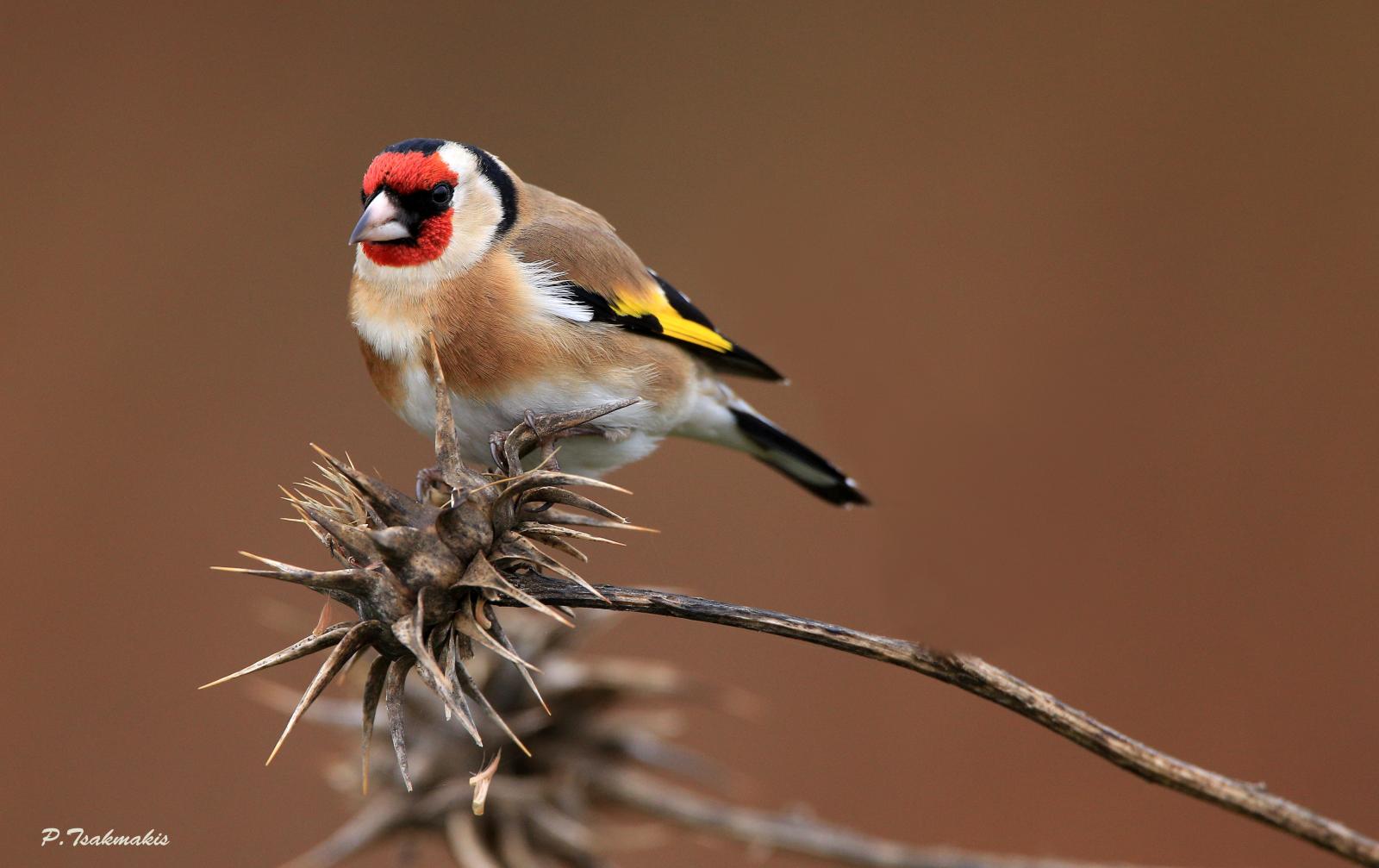Identification
Adults have a black and white head with red around the beak (but also black around the eyes), a brown back and chest and a whitish belly and neck. The European Glodfinch's wings are black with white spots and a yellow stripe down the middle, and this yellow, which is more extensive on the open wing, is what makes it easy for us to recognise it when it is flying. Black tail, also with white spots. Beak pinkish to white with a black tip and pinkish legs. Males are distinguished from females mainly by the greater extent of red on the head and white on the two outer black tail feathers. Juveniles (first summer-winter) have no red on the head until the following spring.
Distribution - Habitat
It is a species of Europe and North Africa and West and also Central Asia. Although it remains year-round in most of the areas where it occurs, in winter the more northerly populations migrate south but it also moves from areas with high altitude to lower altitudes, forming then quite large flocks (up to 100 individuals).
It lives in open woodland and areas with scattered trees/shrubs, tree lines, parks and gardens. It usually breeds below 1000 m altitude.
Interesting Information
- Its beak is conical and long so that it can eat seeds that it pulls from the tops of plants. It also feeds on small buds and fruits as well as arthropods. Arthropods (flies, butterfly caterpillars and spiders) are also used to feed its nestlings.
- The nest (a well-formed cup!) is built by the female and the male carries material (wool, feathers, grasses, leaves of aromatic plants!), carefully hidden in the vegetation (tree or bush), usually at a height of about 5-6 m from the ground.
- It lays 4-6 eggs which the female hatches alone for 10-12 days and the young remain in the nest and are fed by both parents for 2-3 weeks. The family stays together for about 2 weeks after the young leave the nest.

